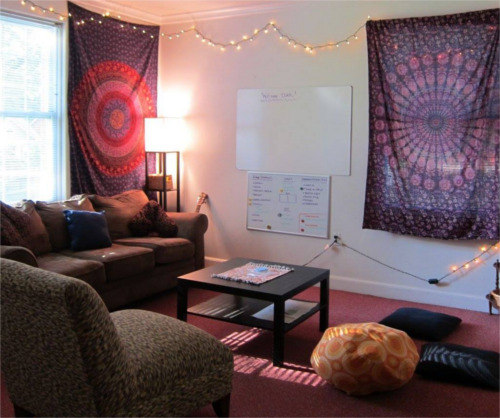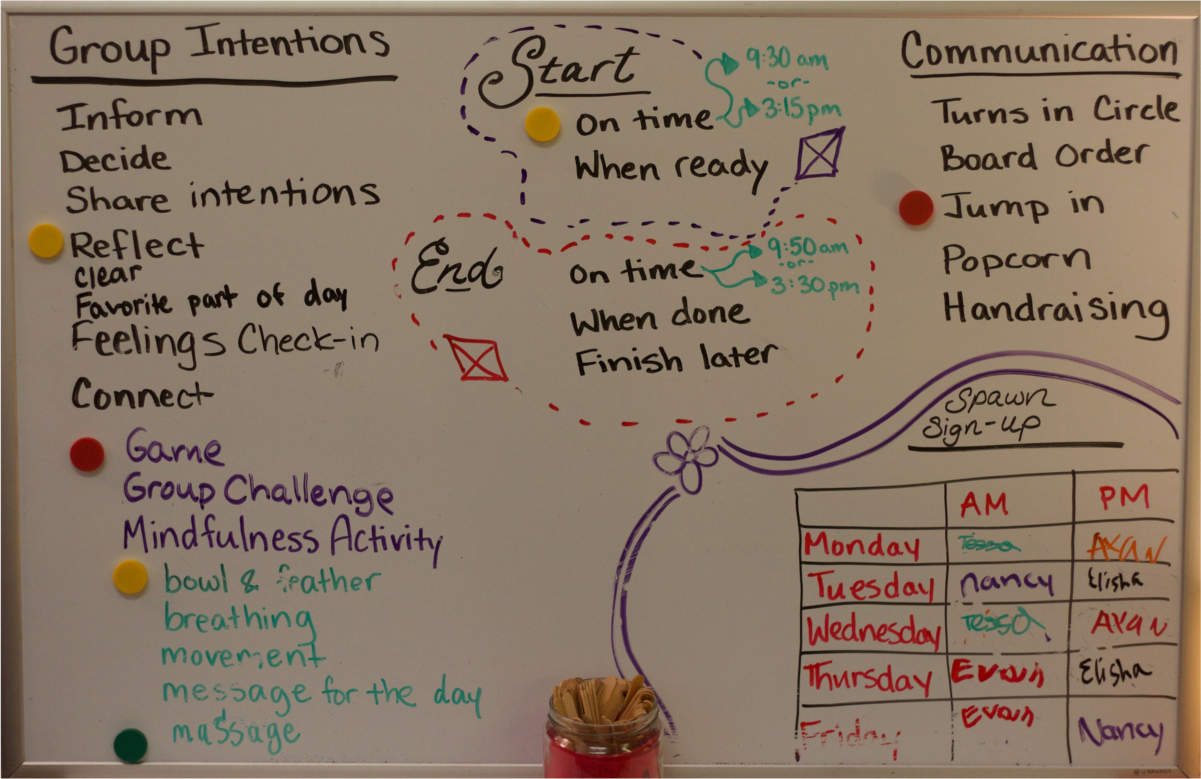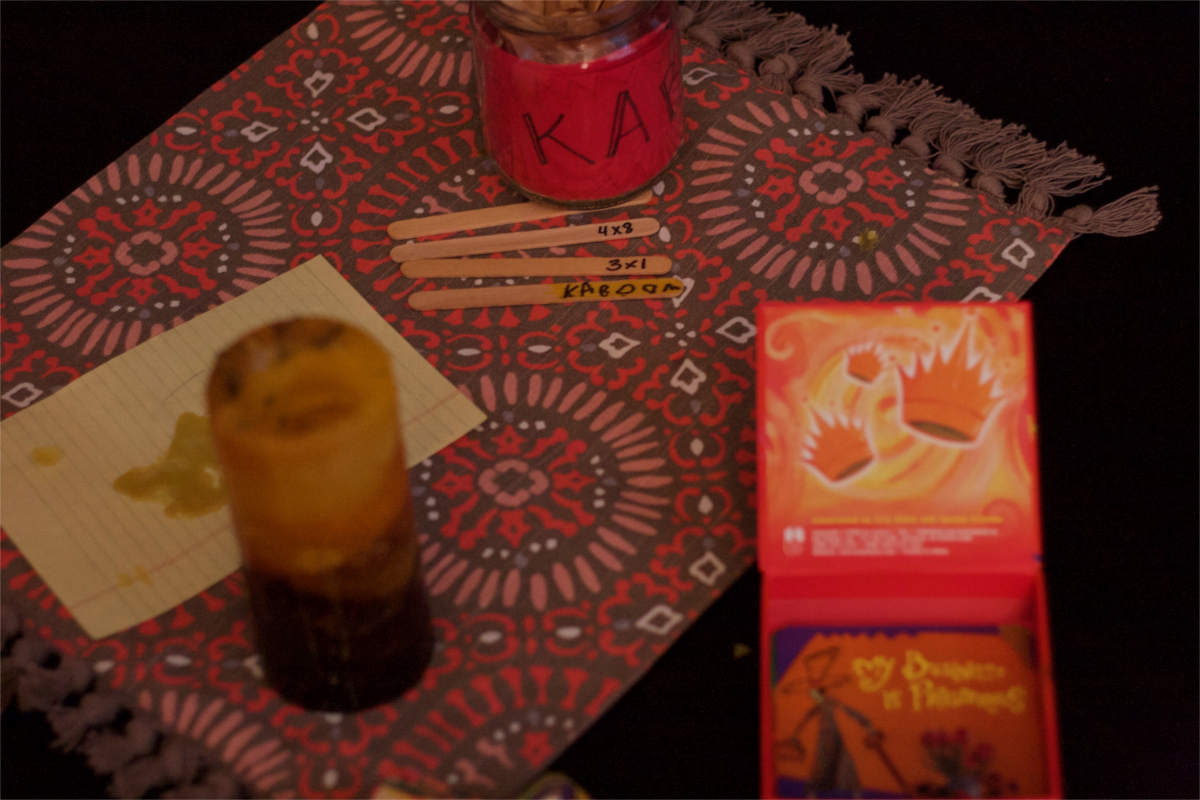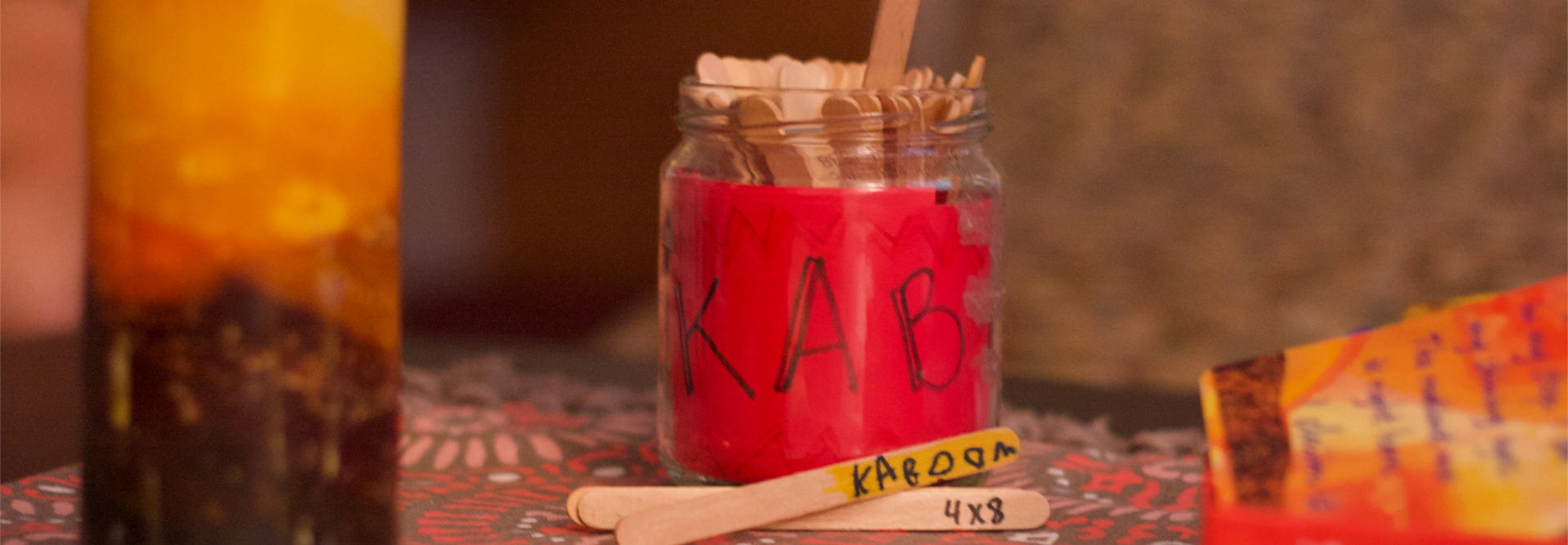I walk into the Quiet Room, the home of my Spawn Point, after our clean up time. At an Agile Learning Center, a Spawn Point is a small group of students and a facilitator who start and end their day together. It’s about 3:10pm. Clean up keeps getting easier and faster, I think to myself. I look at the facilitation sign up board and see that Evan is facilitating this afternoon.
“Hey Evan, Ayan and Elisha are going to be here in a few minutes.” I see he’s moved the magnets on our GameShifting board to Connection Activity –> Game.
“Hey Nancy,” he says, “I was thinking we could play the game where someone is blindfolded and then they try to walk across the room with our directions.”
For some reason when he tells me this, a big light bulb goes off in my head. Last week I learned about a game I really wanted to play with the kids, but I drew a complete blank on the rules when I was at school. All of a sudden the directions to the game come to me and I can’t help but share.

“Oh, I do like that game, but Evan, remember last week when I forgot the rules to the new game I wanted to play? It just came to me right now. Can I explain it?”
“Sure.”
“This is a game where we get to test our mind connections, like a telepathy game. One person looks around the room and writes down 5 objects they see. These objects have to be small enough that we can pick them up and put them on the table. They don’t show anyone their list. When they say go, everyone else goes around and picks up an object and brings it to the table. We try to see how many matches we get!”
Leyla, Tessa and A.J. perk up, chiming in that they want to try this game.
“Can I pick the objects?” Leyla asks, directing the question to Evan, our facilitator.
“Okay we can try it,” he responds.
“Hey Ev, we really don’t have to play this game, I just wanted to share the rules while I remembered them. I love the blindfold game too and would be happy to play.” I really didn’t want Evan to feel like we had to switch games. I have no name for this game and cannot remember where I learned about it. I have no idea why I couldn’t remember it last week, and why it jumped into my head today.
“I want to pick objects.” Leyla says, hoping we will still play the new game.
“It’s fine, we can try this game,” Evan says.
I toss Leyla a post-it pad and a marker. Just as she uncaps the marker the write, Ayan, Elisha, and Tom come in. Tom is visiting from Australia for two weeks. He and his wife are planning to open a school in January of 2018. Tom really wanted to see an ALC in action before they opened, so here he is!
“You’re just in time for our game!” I say, and explain the rules. We sit quietly as Leyla writes. She looks around and is really deliberate and thoughtful about her choices. I look around the room and observe quietly to myself all the objects that look small enough to put on the table. I see the workbooks on the desk, the hands-on equation set, a little painted peg-person on the shelf. That peg-person should be in the basket by the blocks. I make a mental note to put it back where it belongs later. I see the singing bowl, the spirit animal cards, the dry erase markers, my shoes. Would she choose my shoes? I don’t want to put those on the table.
“What would Leyla think to choose?” I say aloud. “This game will give us the opportunity to focus on Leyla and think about what she would pick out in the room. Right now, I’m trying to see the room through her eyes.”
Leyla smiles as she continues to add to the list. She’s not quite done yet when Evan gets up and moves Penguin, our school stuffed animal/therapy toy, to the table.
“Hey Evan, she’s not even done yet,” someone tells him.
“Yeah, let’s wait for her to finish first. Are you almost done, Leyla?” I’m an adult and I’m getting a little antsy, so I completely understand Evan’s excitement to get started. Evan puts Penguin back and waits for her to finish.
Leyla nods, writes one more thing down, and then says she’s done. Before she says “Go!” everyone is up and moving, thinking about what object they want to pick.
The room is pretty quiet. I stand up and turn around to face the altar I have set up against the white bookshelf. I scan the room. I reach for the turkey feather on the altar, but hesitate. Is this what I want to choose? My hand says yes, it’s still reaching out for it as my mind hesitates. I go for it, placing it on the table. I guess I’m just going with my first gut instinct.
This time Evan places a pen on the table. Someone grabs the game of Dixit. A few other items are placed. Finally, Tom grabs the guitar and puts in on the table, the last item. We all look at Leyla, excitedly seeing if we got any of the items correct.
“Do you want me to tell you?” she says, with a smile on her face.
“Yes!!” we all cry.
“It was Penguin, the feather, Dixit, the guitar, and a magnet.” We look at the table. All of us are shocked that three out of five items are actually there.
“Evan, do you realize that your first instinct was to have Penguin on the table? That would be four out of five items we got!” I say, still amazed that we actually got so many of the items correct. I thought we’d be lucky to guess one correctly.
“I’m putting it back!” he says, moving the pen out of the way to make a spot for Penguin. The rest of the kids seem to be in agreement that Evan’s initial item should count. We clean up and then sit in a circle to look at our intentions from the day.

“Okay, let’s go turns in a circle,” Evan starts. “No, wait, we’ll go in board order.” He moves the magnet under Communication Style from turns in a circle to board order.
“Hmmm,” he ponders, taking a few moments to stare up at the board. Then Evan leads us around the board, checking in with everyone about what they intended to do that day, and if they got to do it or not. We each have our turn and share. Then, after the last person is finished, Evan walks halfway across the small room, looking up at the clock.
“Okay, it’s 3:23,” he says, smiling broadly back at us.
“Wow, Evan,” I say, actual tears brimming up behind my eyes. “Do you realize that you set the intention to learn to tell time about two weeks ago, and now you know how to do it?” His smile gets even bigger, “Yeah.” Words can’t begin to describe the feeling I have inside. Here’s a kid who knows how to learn. He learns when he’s ready, on his own time table.
A few weeks ago, Evan decided he wanted to learn how to read an analog clock so Melissa, one of my co-facilitators and his mom, found some resources online to support his interest. Evan’s motivation was clear and remained steady. He spent a couple mornings using some worksheets to identify the time, and would constantly test his knowledge on the analog clocks to check his own accuracy. Now, he’s mastered this skill.
Last month Evan decided he wanted to learn how to ride a bike, and last week he biked 6 miles from school to Uptown and back. After watching Evan learn to ride a bike at age 10, Melissa told me, “It just goes to show you that when they are ready, they will learn, and they will learn easily. I could’ve spent a lot of time worrying about how he couldn’t ride a bike, but I’m happy I just let it go so he could do it when he was ready. I think this is a great reminder about reading too. I think if more kids were able to just wait to read when they were ready, it would happen a lot easier for them.”
I couldn’t agree more.
I look at Evan’s face, and I see that he feels really good about himself. It feels great to decide you want a new skill, then to go after it and master it.
“We still have time for a game,” he tell us. Now I can see he understands how many minutes away from 3:30 we are! We dismiss at 3:30.
“Oh how about a magic trick?” Ayan asks. I hear murmurs of “Yes!” coming from the girls sitting on the couch.

“I want to play the object game again, can I be the person who writes the list?” Elisha pipes up. The kids are directing their requests to Evan, who is back by the GameShifting board, considering how he would like us to spend the last few minutes of the day. He picks up a jar filled with popsicle sticks that has been sitting on the small shelf that props up the GameShifting board. Again, here is another item I need to remember to put away, I think. Like the peg person, I have no idea how this got left here. It’s a math game that belongs in the storage closet.
“I want to play Kaboom.” Evan looks around the room, and I can see he is filled with certainty about playing this game.
“Cool,” I say with a shrug, “I’ve never played it before, but I’m happy to play whatever you want.” Here I am trying to make up for derailing his earlier game choice! I’m still feeling a little bad about that.
“Okay, I’ll tell you how to play. It’s a game my mom made.” He continues to explain how there are multiplication problems on the bottom of each stick. You pull a stick out, answer the problem, and then if you get it right you can keep the stick. If you pull out a stick that says “Kaboom!” you have to put all your sticks back in. You can make the game shorter or longer by setting the winning number of sticks higher or lower. He decides we’ll play to the amount of 6 sticks.
We begin passing around the jar, pulling out multiplication problems. They are all one digit by one digit for the most part, the only two digit problems involving tens. The game was made when Melissa was trying to support kids in finding fun ways to memorize their multiplication tables. I look around, seeing how happy and calm the kids are as they play.
The jar gets to our youngest Spawn Point member, who is 7.
“Hmmm... 3 times 1,” she ponders. I sit back and just observe what will happen. A.J. is a new student at school. I have no idea if she even knows what multiplication is. “I don’t know.”
One of the other other kids tells her it’s 3. That any number times one is just the number.
The jar continues around the circle, and then it’s back to A.J. again. “3 times 4,” she reads aloud.
“A.J. hasn’t learned multiplication yet,” her sister, Leyla, tell us.
“Oh that’s no big deal,” I say. “Hey A.J., so multiplication is just adding a number multiple times. 3 times 4 means you add 3, 4 times. 3 plus 3, plus 3, plus 3.”
She starts counting on her fingers, then looks up and says, “12!” The jar continues around the circle.
The jar keeps moving.
Back to A.J. again. “6 x 3” she reads. Short pause, and she is counting on her fingers. “18.”
If you enjoyed this article and feel called to give back to ASDE, here are ways you can support our work:
- Donate money
- Share our content with others! Click one of the buttons above to easily share on Twitter, Facebook, or email.
- Consider becoming a Contributor for Tipping Points
Tipping Points Magazine amplifies the diverse voices within the Self-Directed Education movement. The views expressed in our content belong solely to the author(s). The Alliance for Self-Directed Education disclaims responsibility for any interpretation or application of the information provided. Engage in dialogue by reaching out to the author(s) directly.






